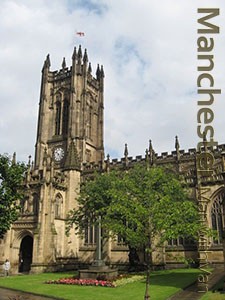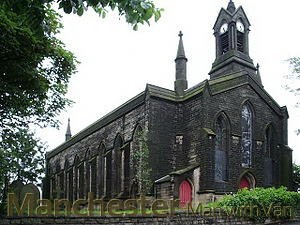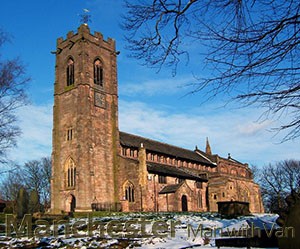 While driving around Manchester – the city and Greater Manchester as well, carrying out man and van services we are known to be good at delivering, we often notice that the churches and cathedrals are what gives particular area its character. It is no wonder that when listing architectural monuments in a given area, guides and specialists inevitably mention its churches. Most of them are beautiful and crafty monuments in their own right.
While driving around Manchester – the city and Greater Manchester as well, carrying out man and van services we are known to be good at delivering, we often notice that the churches and cathedrals are what gives particular area its character. It is no wonder that when listing architectural monuments in a given area, guides and specialists inevitably mention its churches. Most of them are beautiful and crafty monuments in their own right.
Here we have tried to collect some of the finest examples of churches and cathedrals spread across the territory of Greater Manchester.
- Manchester Cathedral, the Mother church of the Anglican diocese in Manchester, is the logical place to start. First, because it is located in the heat of the city, and because it is the largest and most beautiful cathedral in Manchester at the present moment. It was built in more than 60 years, between 1421 and 1482. Two types of stone were used for the construction work – dark brown sandstone for the walls and limestone for the floors. The present day outlook of the Manchester Cathedral is mainly due to the restoration work that was carried out on the site in the 1840s.
 St John The Baptist Church in Smallbridge is one of the most peculiar parish churches in Greater Manchester. It was built in 1834 after the design of the famous architect Lewis Vulliamy. Its structure is of ashlar stone and the church has slate roofs. The architectural style employed is Gothic Revival which explains the unusual effect that St John’s church has on visitors both on the exterior and in the interior.
St John The Baptist Church in Smallbridge is one of the most peculiar parish churches in Greater Manchester. It was built in 1834 after the design of the famous architect Lewis Vulliamy. Its structure is of ashlar stone and the church has slate roofs. The architectural style employed is Gothic Revival which explains the unusual effect that St John’s church has on visitors both on the exterior and in the interior.- The Church of St Mary the Virgin in Prestwich is one of the oldest churches that exist in Greater Manchester. The earliest evidence of a temple here is from the beginning of the 13th century, and the church that we see today at the spot has been erected in the 1500s.
 The building has a Grade I listing and even a quick look at its interior and exterior will show you why it is considered to be an architectural heritage of the British nation. Sandstone and stone slate roofs are what St Mary the Virgin is made of. The interior of the church has many arcades on tall octagonal piers without capitals. All the decoration, the organ, bells and other vital elements for the proper functioning of every cathedral were collected in the many centuries of history that St Mary the Virgin has. That is why it may safely be stated that it is one of the buildings that still contained the living history of Britain from the past half a millennia behind its walls.
The building has a Grade I listing and even a quick look at its interior and exterior will show you why it is considered to be an architectural heritage of the British nation. Sandstone and stone slate roofs are what St Mary the Virgin is made of. The interior of the church has many arcades on tall octagonal piers without capitals. All the decoration, the organ, bells and other vital elements for the proper functioning of every cathedral were collected in the many centuries of history that St Mary the Virgin has. That is why it may safely be stated that it is one of the buildings that still contained the living history of Britain from the past half a millennia behind its walls. - The Church of the St Cross in Clayton is one of the finest examples of Victorian Churches that we have surviving in Greater Manchester today. It was built in the period between 1863 and 1866 after a design by William Butterfield, whose peculiar architectural style can be seen in the red brick, with blue brick and pale stone banding of which the whole church structure was made of, as well as in elements of the decoration.
- The Hidden Gem, as it is often referred to, is the main Roman Catholic temple in the City of Manchester. It is dedicated to St Mary. It was built in 1794 and dedicated to St Mary, Our Lady of the Assumption. After a collapse of the roof, extensive restoration work was done in the 1830s when the Hidden Gem became the church that we know today. In contrast to other churches that are described on this list, The Hidden Gem is not built in the standard for its age Gothic Revival or Victorian style, but follows the prescriptions of the Italian style for church building.
- St Savior’s Church is one of the major landmarks in the small suburban districts of Ringley in Greater Manchester. It is one of the oldest buildings in the area, being contrasted in 1625. Unfortunately, the original church, with exception of the tower, which by the way is its most distractive feature, was demolished and the whole temple was rebuilt in the period between 1850 and 1854. The ashlar dressing of the exterior walls is a typical feature of most Anglican parish churches. What makes St Savior’s so peculiar is the interior. In addition to the original fittings that were moved to the new building, we are going to find several pretty interesting railings in the rococo style. There are a reredos and sedilia in alabaster dating from 1879 containing mosaic and statues, as well as a stained glass on the north side that remains from the 17th This curious mix makes the St Savior’s Church one of the most interesting places to see in Greater Manchester at the present moment.
- Of course, we cannot miss to mention St Peter’s Church in Bolton either. It is also known as the Bolton Parish Church. Dedicated to St Peter, it is an example of the Gothic Revival style – and a pretty fine one we might add. It was built on the place of a much older church from the 15th The construction continued from the beginning of the 1840s to the official opening in 1871. The overall height of the building is 25 meters, but the tower is more than two times higher – 55 meters. According to the specialized sources, it is the highest church tower in the whole historic county of Lancashire. The interior of St Peters is just as astonishing as the exterior. There is pretty rich decoration, and marvelous works of art as well as functional elements like an organ are to be found once you step in through the door of St Peter’s. The original organ for example was built in 1795 and was enlarged in 1855 before it was replaced by a wholly new one in 1882 – it has over 3000 internal pipes.